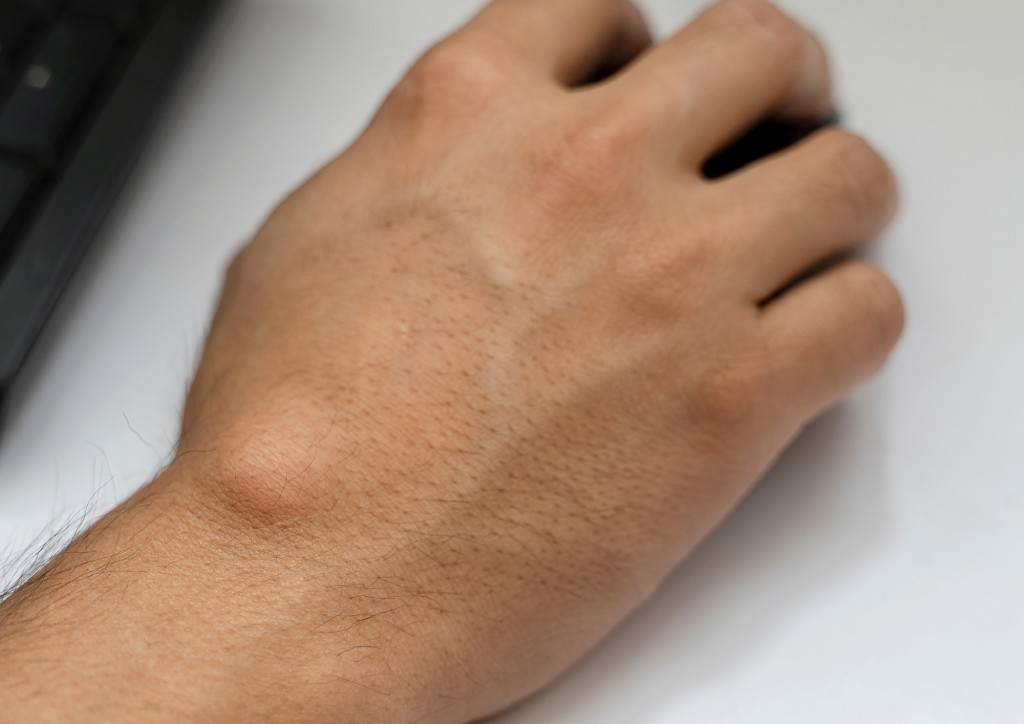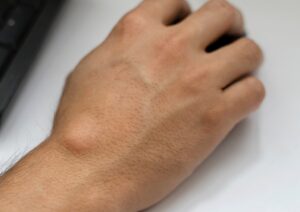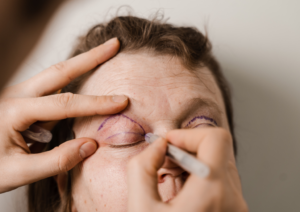
Ganglion Cyst: Symptoms, Causes & Diagnosis
Ganglion cysts are one of the most common soft tissue lumps found on the hand, wrist, or foot. They are usually benign, fluid-filled swellings that can vary in size and may cause discomfort or mild pain depending on their location.
Understanding their symptoms, causes, and treatment options can help patients manage the condition effectively and make informed decisions.
What is a Ganglion Cyst?
A ganglion cyst is a fluid-filled lump that typically forms near a joint or tendon. These cysts are generally harmless and can appear anywhere in the body, but most commonly occur on the wrist, hand, or foot.
There are several types of ganglion cysts. Some of the most common include;
- Dorsal wrist cysts: The most common type, appearing on the back of the wrist.
- Volar wrist cysts: Found on the palm side of the wrist and may press on nearby nerves.
- Digital mucous cysts: Develop near the end joints of the fingers and can sometimes cause nail changes.
- Occult cysts: Small and not easily visible, often detected only through imaging.
Ganglion cysts are benign, meaning they are not cancerous. They consist of a jelly-like fluid that originates from the joint or tendon sheath, creating a soft or firm lump under the skin. While they may change in size over time, they do not usually pose a serious health risk.
Common Symptoms of Ganglion Cysts
Symptoms can vary depending on the cyst’s size and location. Some cysts are normal and only noticeable as a lump, while others may cause discomfort:
- Visible lump: Usually smooth and round, often on the back of the wrist.
- Pain or tenderness: Especially when pressing on nearby nerves.
- Fluctuation in size: Cysts may become larger with activity and smaller at rest.
- Motion-related discomfort: Difficulty moving a joint or gripping objects.
- Numbness or tingling: Rare, occurs if the cyst presses on a nerve.
Some cysts are asymptomatic, causing no pain or functional problems, while symptomatic cysts may interfere with daily activities.
Causes and Risk Factors of Ganglion Cysts
The exact cause of ganglion cysts is not fully understood, but several factors are thought to contribute.
Possible Causes
- Joint or tendon irritation: Repeated stress or minor injuries may trigger cyst formation.
- Pain or tenderness: Especially when pressing on nearby nerves.
- Fluctuation in size: Cysts may become larger with activity and smaller at rest.
- Motion-related discomfort: Difficulty moving a joint or gripping objects.
- Numbness or tingling: Rare, occurs if the cyst presses on a nerve.
Risk Factors
- Age group: Most common in adults aged 20–40 years.
- Gender: Slightly more frequent in women.
- Occupations or hobbies: Activities that involve repetitive hand or wrist movements, such as typing, manual labour, or sports.
How is a Ganglion Cyst Diagnosed?
Diagnosis typically involves a combination of physical examination and, in some cases, imaging tests.
Physical Examination
- The doctor will inspect and feel the lump, checking its size, consistency, and mobility.
- They may ask about pain, tenderness, and any impact on joint movement.
Imaging Tests
- Ultrasound: Can confirm the fluid-filled nature of the cyst.
- MRI: Rarely required, used to rule out other soft tissue conditions.
Treatment Options for Ganglion Cysts
Treatment depends on the severity of symptoms and how much the cyst affects daily activities. Options range from observation to surgical intervention.
Non-Surgical Treatments
- Observation: Many cysts resolve naturally without intervention.
- Aspiration: Fluid may be drained using a needle, although cysts can recur.
- Splinting and anti-inflammatory medications: Help reduce discomfort and limit movement that aggravates the cyst.
Surgical Treatments
Surgery is considered if the cyst is painful, limits movement, or recurs after non-surgical management.
- Indications for surgery: Persistent pain, nerve compression, or functional limitation.
- Surgical techniques:
- Open surgery: The cyst is removed through a small incision.
- Arthroscopic surgery: Minimally invasive technique, less common for hand cysts.
- Recovery and recurrence risks: Most patients recover well, but cysts can occasionally return.
When to Consider Surgery for a Ganglion Cyst
While some ganglion cysts settle on their own, others may cause ongoing discomfort, limit movement, or interfere with daily activities. In these cases, surgery is often the most effective way to relieve symptoms and restore function.
At Plastic Surgery Central, our surgeons perform ganglion cyst removal using precise surgical techniques designed to remove both the cyst and its stalk, helping to reduce the chance of recurrence. Each procedure is carefully planned to support comfort, recovery, and optimal hand function.
Our Surgeons
Recent Post

What is Melanoma? Causes, Symptoms, and Treatment Options

Types of Reconstructive Surgery and Their Role in Recovery After Injury

Understanding Trigger Finger: Causes, Symptoms, and Treatment Options

Ganglion Cyst: Symptoms, Causes & Diagnosis











